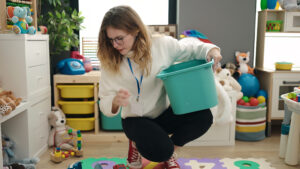Jump to...
What is Strep A?
Strep A (also known as group A Streptococcus) is the name of bacteria that may be found on the skin, throat and elsewhere in the body. This bacteria can be present without causing problems, but in some cases it can cause infections, including scarlet fever and impetigo. On very rare occasions, it can cause more severe diseases including septicemia and invasive Group A strep.
Is Strep A the same as scarlet fever?
What are the symptoms of a Strep A infection, including scarlet fever?
Symptoms can include a sore throat, headache, and fever, along with a fine, pinkish or red body rash with a sandpapery feel that develops on the first day of fever. On darker skin, the rash can be more difficult to detect visually but it will still have a sandpapery feel.
In severe cases of scarlet fever, a child may have difficulty swallowing and tender enlarged lymph nodes. Another symptom is a white coating on the tongue, which peels a few days later, leaving the tongue looking red and swollen (known as ‘strawberry tongue’).
How is scarlet fever treated?
What is invasive Group A strep?
Invasive Group A strep (iGAS) is a very rare illness caused when Strep A bacteria gets into the bloodstream. This can happen when a person has sores or open wounds that allow the bacteria to get into the tissue, breaches in their respiratory tract after a viral illness, or in a person who has a health condition that decreases their immunity to infection. When the immune system is compromised, a person is more vulnerable to invasive disease.
Some of the most severe but rare forms of iGAS include Necrotising fasciitis, necrotising pneumonia and Streptococcal Toxic Shock Syndrome.
What should parents and carers do if they think their child has a Strep A infection?
If a child shows any of the above symptoms, parents and carers should contact their GP practice or NHS 111 to seek advice. Early treatment of scarlet fever with antibiotics is important to reduce the risk of complications such as pneumonia or a bloodstream infection.
If their child has scarlet fever, they should be kept at home for at least 24 hours after the start of antibiotic treatment to prevent infection spreading to others.
Parents and carers should also contact their GP or NHS 111 if they or their child has been in contact with someone who has had Strep A recently.
In addition to the symptoms listed above, parents/carers should trust their own judgement and contact NHS 111 or their GP if:
- Their child is getting worse.
- Their child is feeding or eating much less than normal.
- Their child has had a dry nappy for 12 hours or more or shows other signs of dehydration.
- Their baby is under three-months-old and has a temperature of 38C, or is older than three months and has a temperature of 39C or higher.
- Their baby feels hotter than usual when you touch their back or chest, or generally feels sweaty.
- Their child is very tired or irritable.
Parents/carers must call 999 or take their child to A&E if:
- Their child is having difficulty breathing-the parent/carer may notice grunting noises or their tummy sucking under their ribs.
- There are pauses when their child breathes.
- Their child’s skin, tongue or lips are blue.
- Their child is floppy and will not wake up or stay awake.
What steps can be taken to prevent Strep A infections from spreading?
Children should be taught and reminded to wash their hands properly with soap for 20 seconds, use a tissue when coughing or sneezing and to keep away from others when they are feeling unwell.
A child in my early years setting has scarlet fever. Do I need to report this?
If there are two or more probable or confirmed cases of scarlet fever at your setting within 10 days of each other, and the affected children have a link (for example, they are in the same room), you should notify your local Health Protection Team (HPT).
You should also contact your local HPT if there is:
– a higher than previously experienced and/or rapidly increasing number of absences due to the same infection
– evidence of severe disease due to an infection – for example, if an individual is admitted to hospital.
– more than one infection circulating in the same group of children – for example, chicken pox and scarlet fever You can find your local HPT contact details here.
What should I / we tell parents and carers if we have a case of scarlet fever in the setting?
The UK Health Security Agency has produced a template letter, available on page 26 of Guidelines for the public health management of scarlet fever outbreaks in schools, nurseries and other childcare settings.
The Alliance has produced a editable Word version of this document for early years settings and groups, available here.
When can a child with scarlet fever return to the setting?
Children with scarlet fever should remain at home until 24 hours after starting appropriate antibiotic treatment.
If the child hasn’t been given any antibiotics, they will be infectious for two to three weeks and should be excluded for this period.




